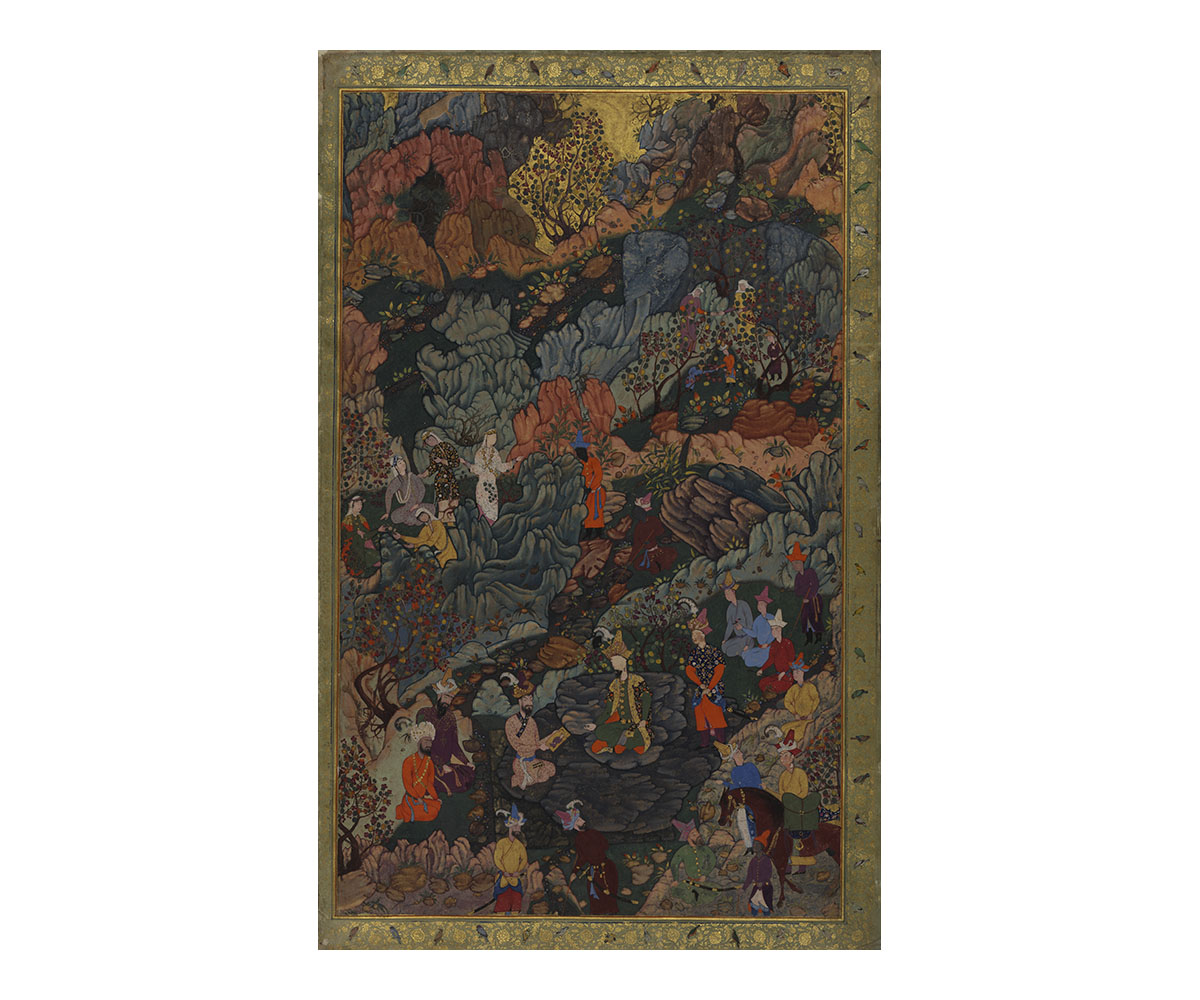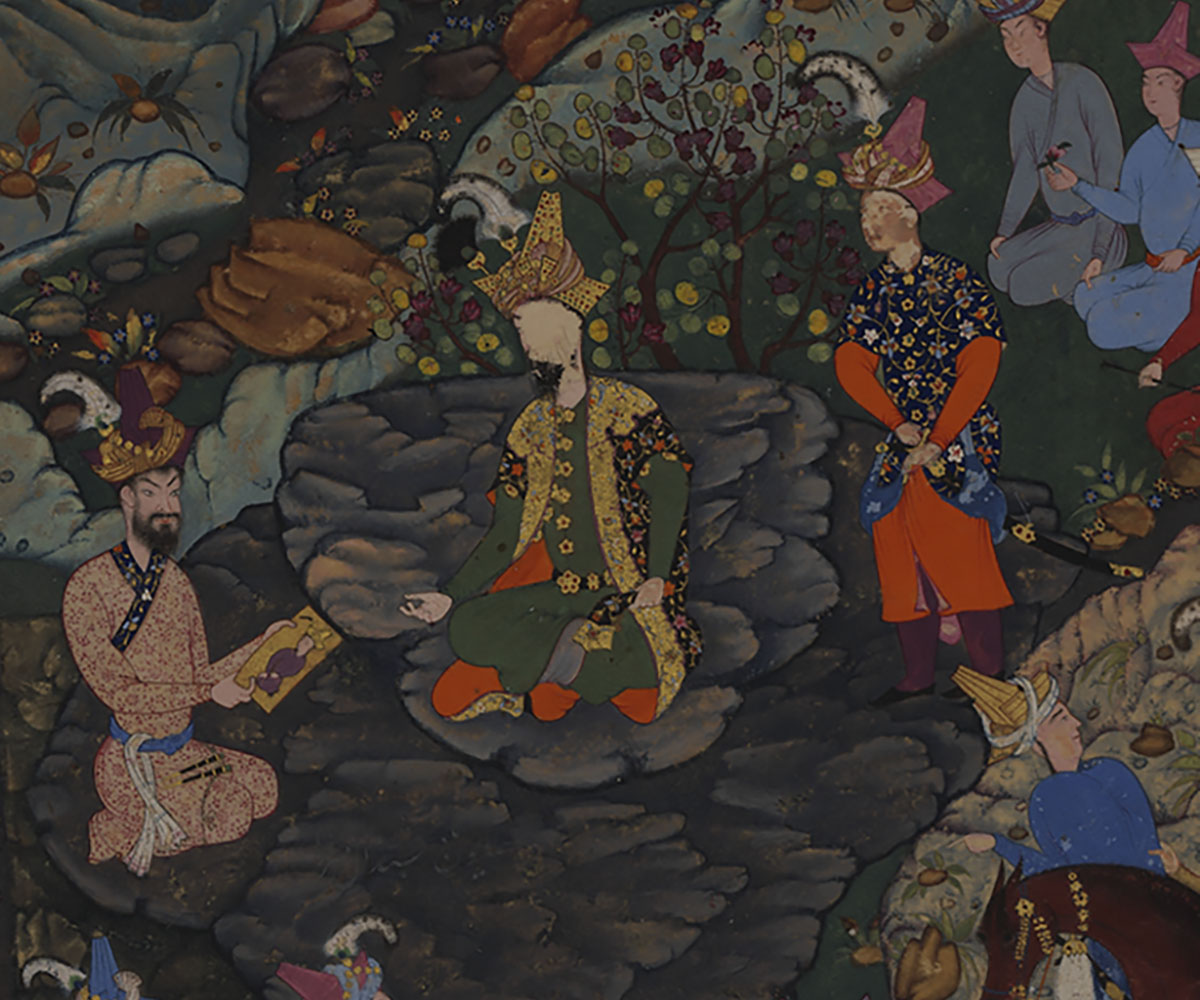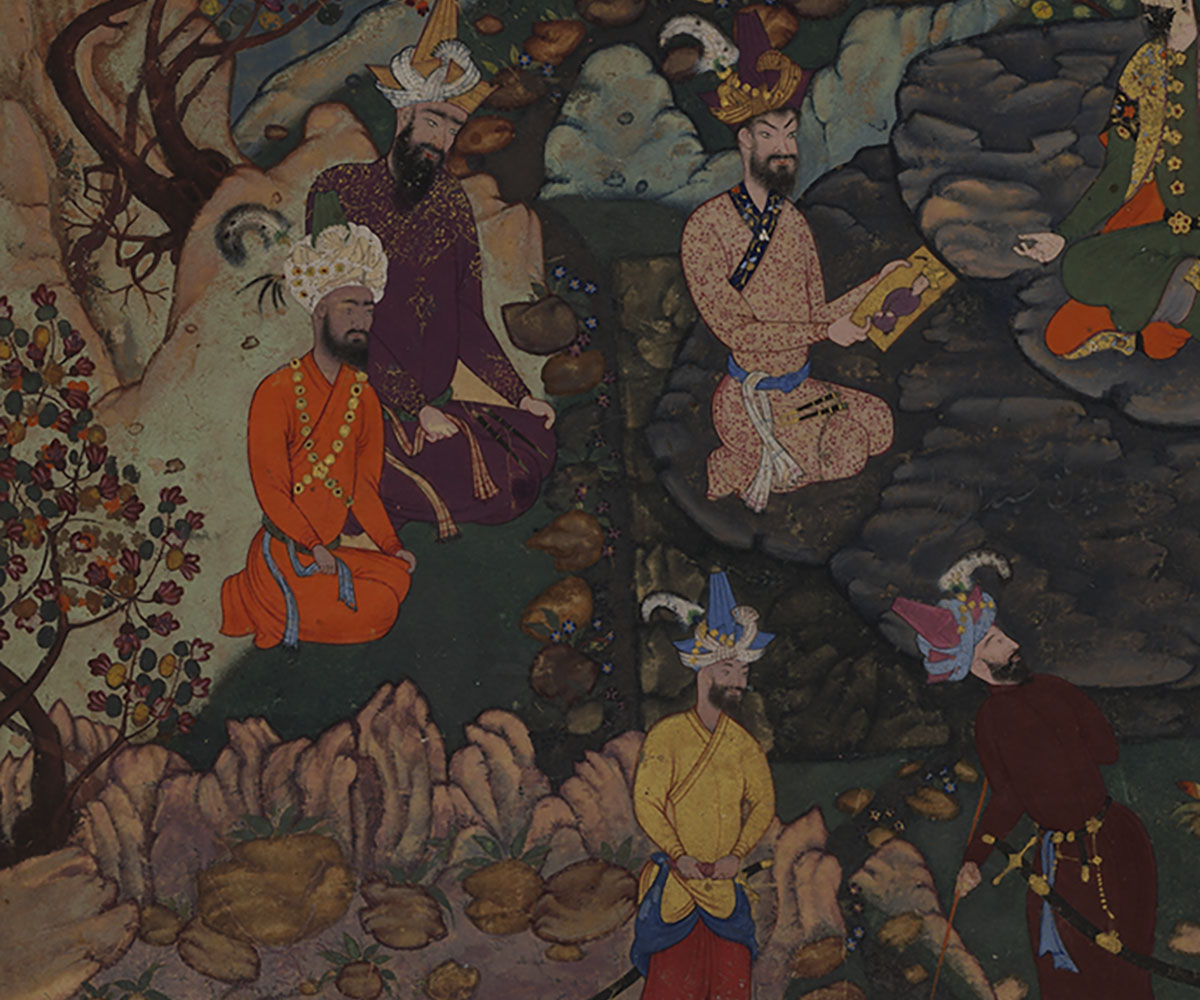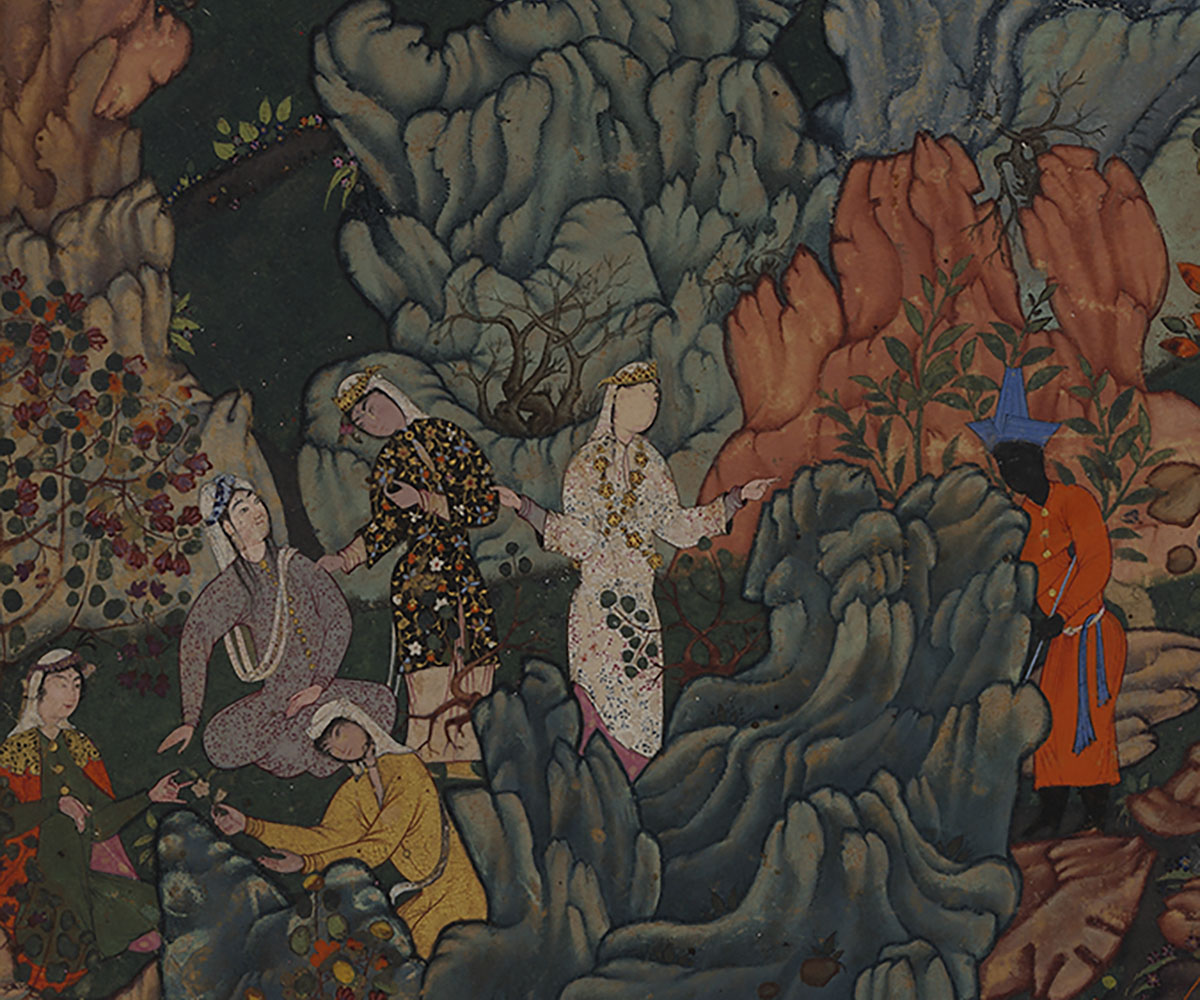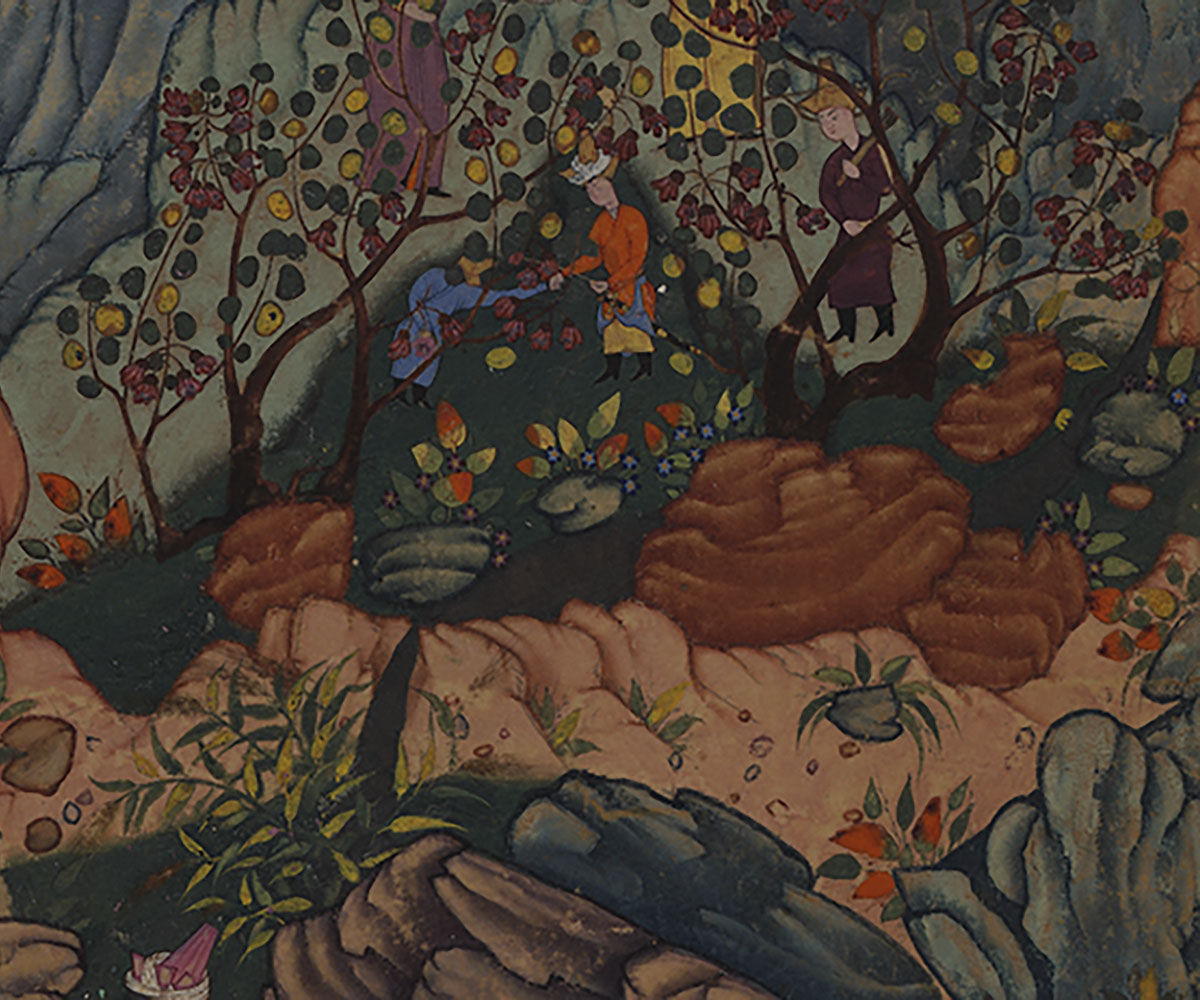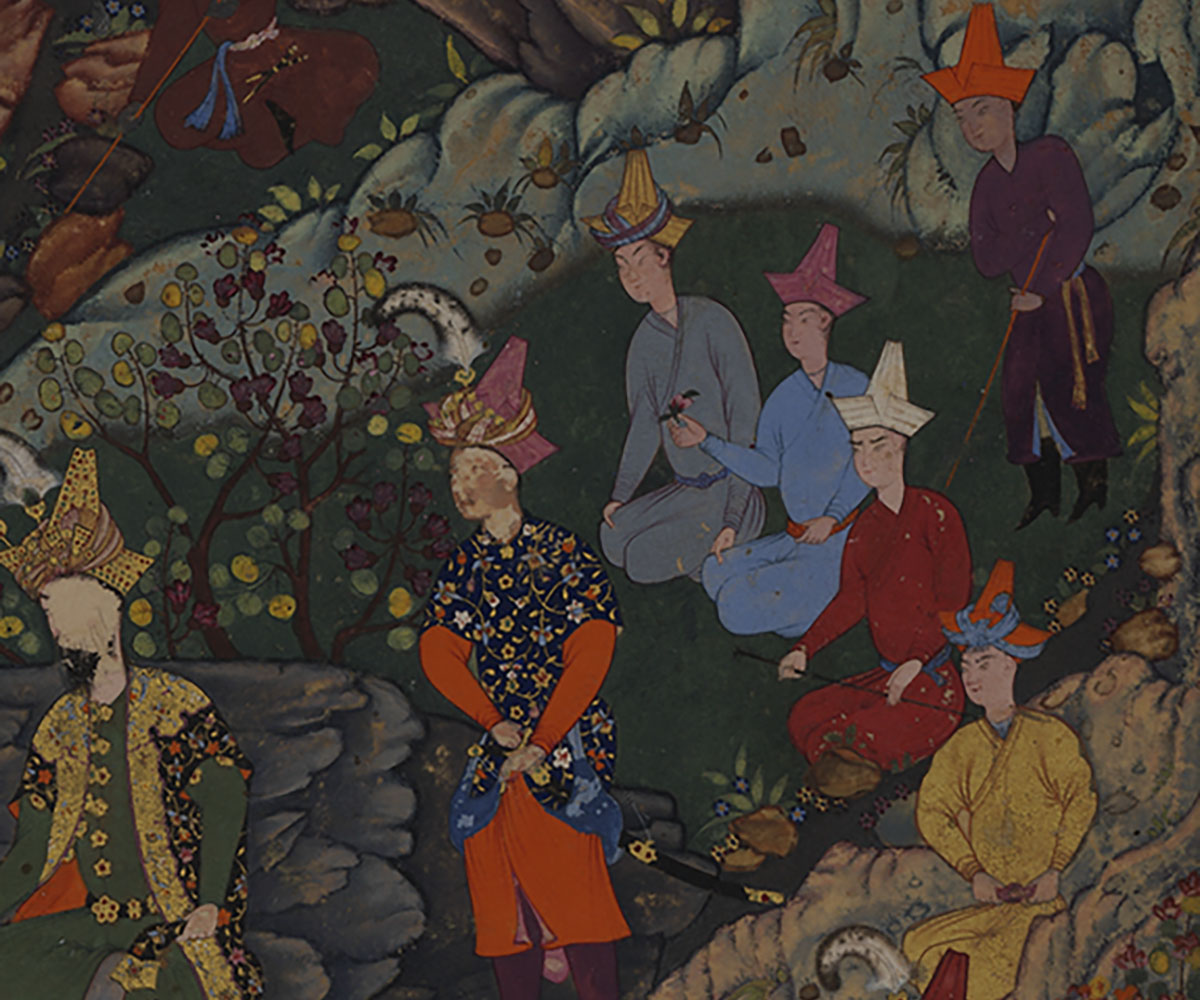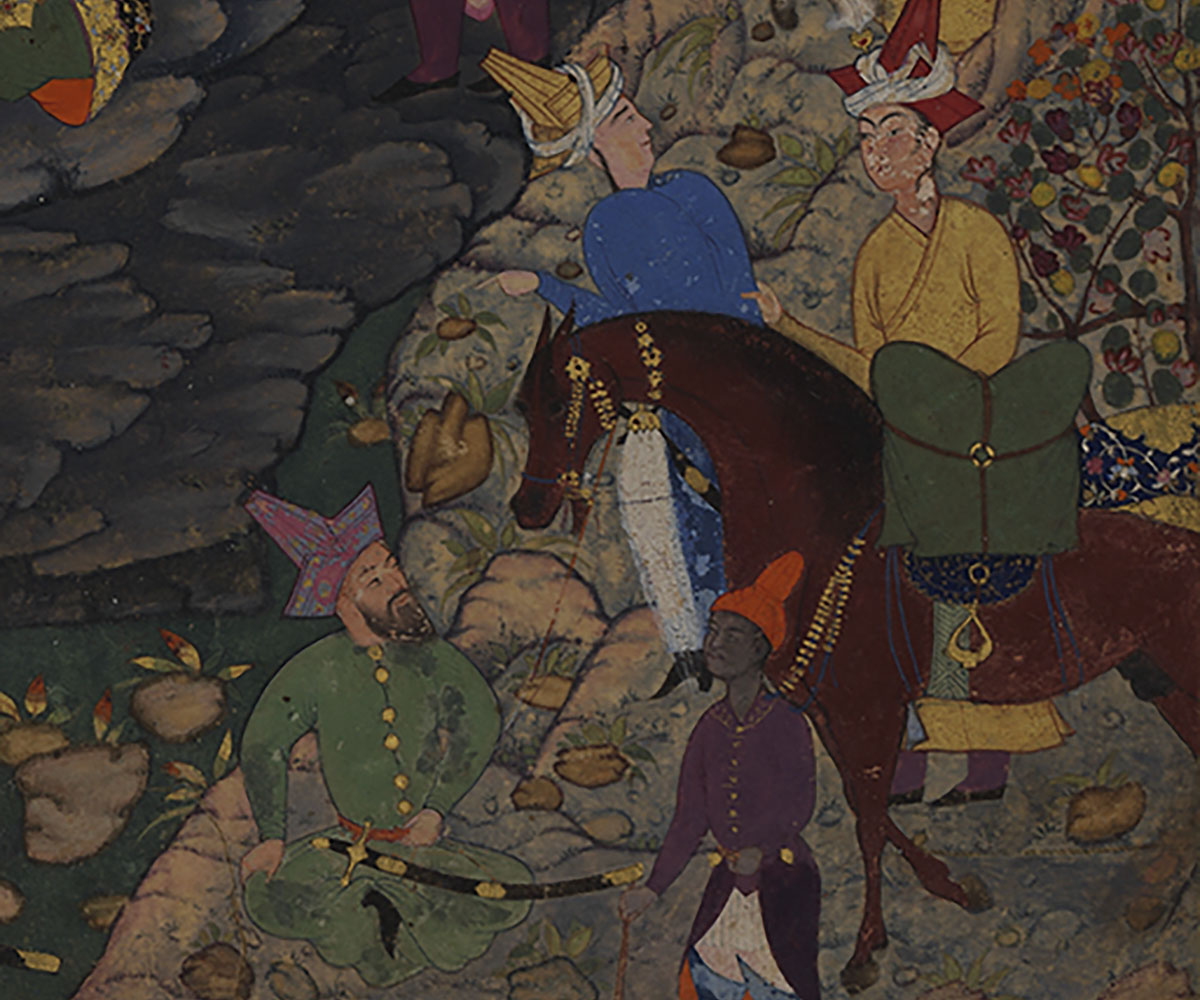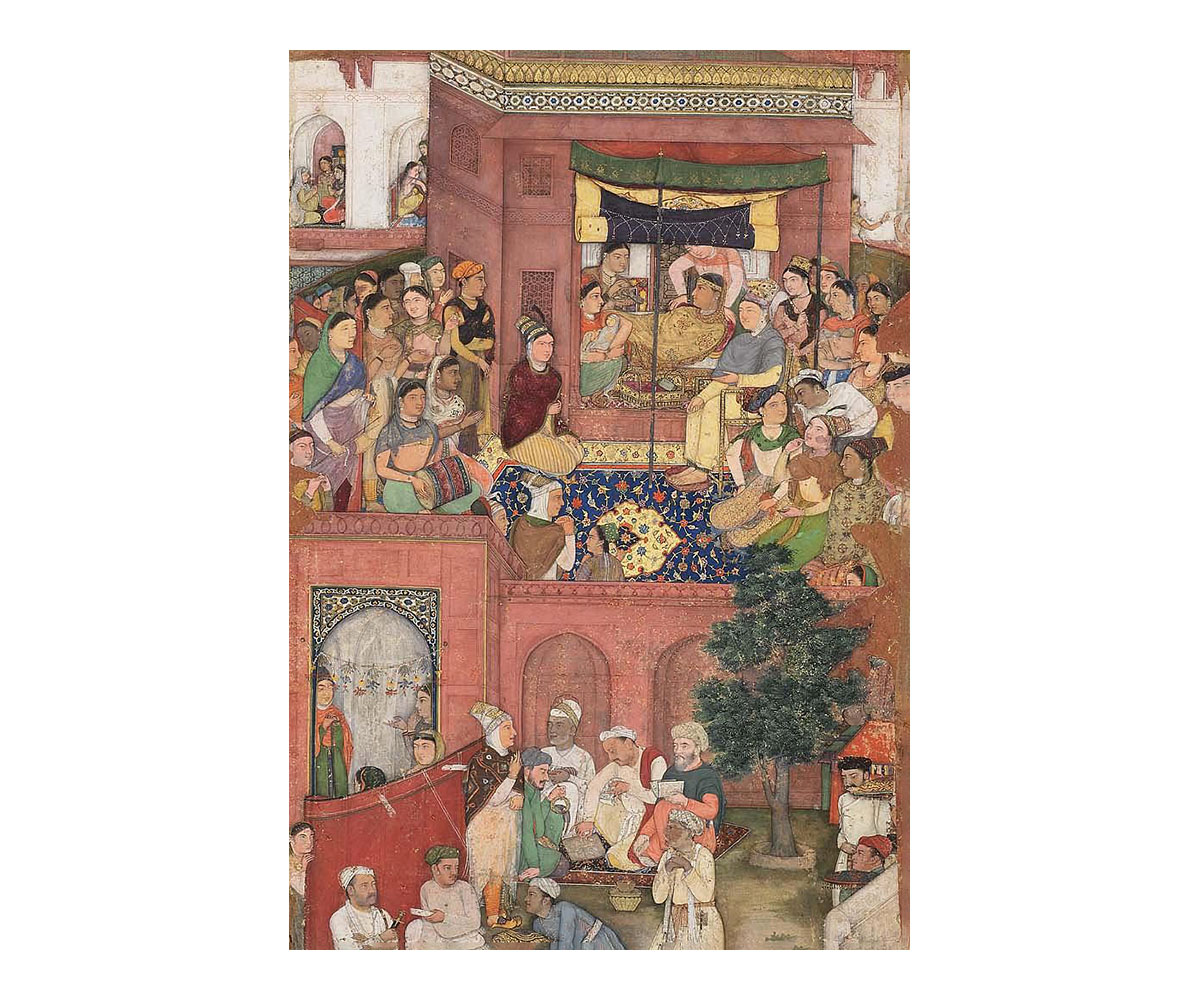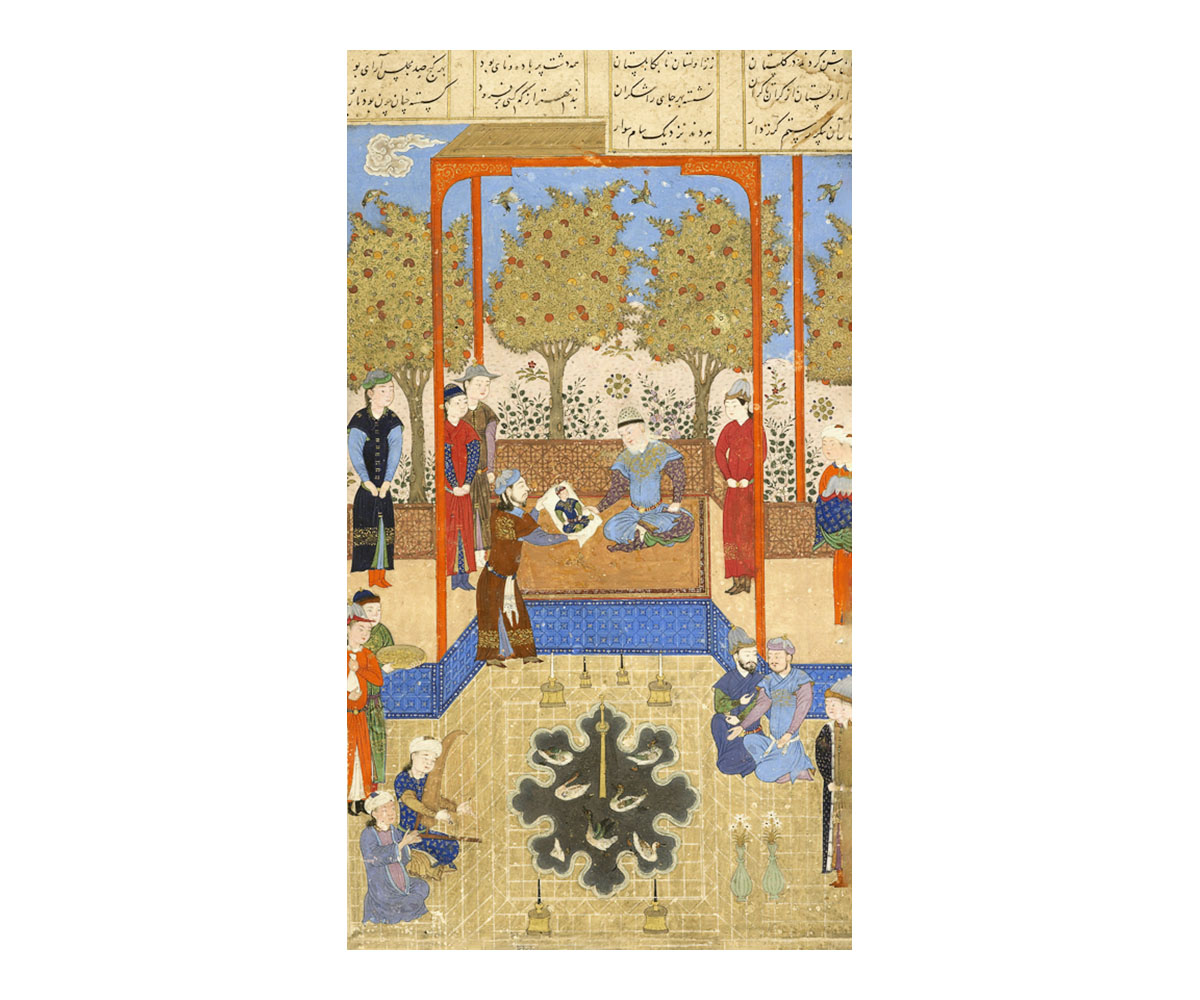PERSPECTIVES
What One of the Earliest Mughal Paintings Says about Power and Ancestry
An emperor in exile is handed a portrait of his son, while surrounded by a host of figures — women from the royal household, frolicking children, courtiers, eunuchs and attendants — against the backdrop of delicate foliage and looming rock formations. One of the earliest datable Mughal paintings produced in the Kabul atelier in c. 1546, Humayun and his Brothers in a Landscape bustles with activity.
Attributed to Dust Muhammad, the painting was produced during the period when Humayun was exiled from the Mughal throne, from 1540 to 1555. It depicts the emperor and his entourage in the rocky, overgrown wilderness of Khwaja Yeh Saran, in present-day Afghanistan. Some scholars believe that it chronicles a historical visit to either a sacred oak shrine and cave or orange groves near Kabul. Others cite the prominence of children and women as evidence that the painting might record an excursion to celebrate Humayun’s son and heir, Akbar’s circumcision.
Although the painting seems like a straightforward visual documentation of a life event, on closer look, we see that Muhammad has interspersed it with symbolic and metaphorical meanings along with references to other works of art to reinforce Humayun’s position as a regent with Akbar as his rightful successor.
In the centre of the composition, we see Humayun in green robes while his brother Hindal hands him a portrait of Akbar. Both sport the taj-i izzat — a characteristic headgear worn by Humayun and his inner circle, before being discontinued by Akbar upon his ascendence to the Mughal throne. Humayun wears the headgear with a black egret feather protruding from it, an ornament reserved for rulers.
Above them, his wife and Akbar’s mother, Hamida Begum, appears near the left margin of the painting, recognisable as royalty through her opulent golden collar and the black egret plume emerging from her headdress. Next to her, we see two figures adorned in golden chains and wearing diadems — these are presumably Humayun’s sisters. The similarity in how Humayun and Hamida are dressed indicates that the painting is actively reinforcing Akbar’s lineage by highlighting his royal parents.
The central composition depicting a portrait being handed to Humayun also visually parallels other fifteenth-century paintings such as Portrait of the Infant Rustam shown to Sam (1444) and Iskander Visiting the Hermit. (1494- 1495), which were made under the Timurid dynasty that ruled over parts of Iran and Central Asia in the fifteenth and sixteenth centuries. These also depict the portrait of a child or a manuscript being handed by one figure to another. Dust Muhammad’s direct reference to the older powerful dynasty and manner of painting is perhaps not just an appreciation of the style. The resemblance between the depictions of figures in those paintings and Humayun in this work could have been a strategic choice by Muhammad to connect the emperor’s lineage to the Timurids — his ancestors. In later years, Humayun’s descendant Jahangir and other Timurid princes not only commissioned images that highlighted their links to the Timurid rulers but also collected porcelains and other rare objects that belonged to them to reinforce their connection to the dynasty.
Muhammad also references Akbar’s maternal lineage and links to Humayun’s erstwhile territories in the Indian subcontinent. A grey rock in the top right corner — under which we see a host of children playing — resembles an elephant and looms large over the children as a protector. The elephant is believed to be emblematic of India and perhaps alludes to Humayun’s desire to recapture his throne from his brother Kamran. According to scholar Laura Parodi, it might also be a reference to Akbar’s maternal ancestor, the saint Ahmad of Jam, known as Zhinda-Pil (Persian for large elephant) who is said to have predicted Akbar’s birth in a dream.
Another rock formation under the cave shrine resembles a mother lying down with her infant. The pose in which mother and child appear mirrors other paintings recording the birth of prophetic or royal children, such as the fourteenth-century Ilkhanid painting Birth Scene in the Diez Album. We see similar depictions in later Mughal paintings such as the seventeenth-century work Birth of Prince Salim, as well. The prominent presence of Hamida Begum and other connections to Akbar’s mother’s family is also an attempt to portray a strong connection to his Persian lineage. This emphasis on Akbar’s connection to powerful and divine ancestry characterises him as the rightful heir to the throne.
Created at the transient and mostly forgotten Kabul atelier of an exiled king, the painting is a testament to the importance of patronage as a tool to create allegorical, symbolic and idealised images of rulers. Muhammad’s painting of a singular event tells us more than meets the eye. With the use of realistic and fantastical elements, the painting is both an image of merriment and a record of political apprehension. The references to ancestors and other visual metaphors allude to a glorious past while simultaneously prophesying a promising future.
Bibliography
Parodi, Laura and Bruce Wannell, “The Earliest Datable Mughal Painting: An Allegory of the Celebrations for Akbar’s Circumcision at the Sacred Spring of Khwaja Seh Yaran near Kabul (1546 AD).” AsianArt.com, 2011. https://www.asianart.com/articles/parodi/index.html
Welch, Stuart Cary. “India: Art and Culture 1300-1900.” New York: Metropolitan Museum of Art, 1985. https://libmma.contentdm.oclc.org/digital/collection/p15324coll10/id/79711/rec/63.
Wescoat, James. “Gardens of Invention and Exile: The Precarious Context of Mughal Garden Design during the Reign of Humayun (1538-1556).” Journal of Garden Design 12, no. 2 (1990): 112–113.




